Door closers
Door closers are devices for automatic door closing. Most commonly used devices are hydraulic door closers, using for closing the energy input during door opening.
We offer a wide range of door closers, Europe's leading manufacturers like GEZE, DORMA, ECO-Schulte, G-U. In the catalog we present only the basic models, in our offer are available many other models with various special functions, like door closers for double-doors, electrically operated door closers, models with delay closure and other.
How to choose a door closer?
Selection of door closer depends on the following factors:
- Width of door wing – It is the basic parameter which must be matched power of door closer EN 2-7 (EN 2 double-wing door to 850 mm, EN 3 to 950 mm, EN 4 to 1100 mm, EN 5 to 1250 mm, EN 6 to 1400 mm , EN 7 to 1600mm),
- Weight of door wing (some models of door closers has an upper limit of the weight of the door wing),
- Closer installation location (interior doors, exterior doors)
- Method of door closer installation (on the door wing on the hinge side or opposite to hinge on the frame, the door wing, in the floor)
- Usable and aesthetic values ( arm closer, railing, hidden in the door wing, on the floor)
- Regulate the method and scope of door closer work and force
- The availability of additional functions ( opening lock function, windbreak, delay of closing, fire protection requirements, synchronous operation, color of the casing)
Basic types of the door closers:
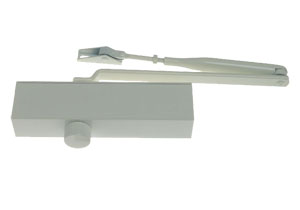
Arm Door closer
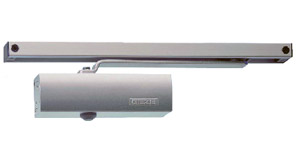
Railed Door closer (a variation of this type is closer flush into door wing)
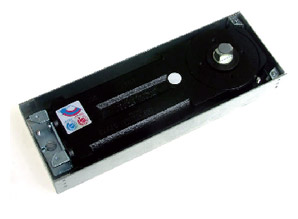
Floor Door closer
Regulation of the door closers
The adjustment range depends on the type of door closer and can include the following functions:
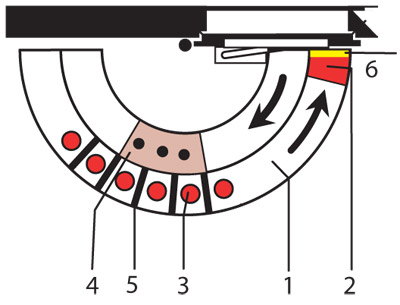
standard for most closers:
- adjustment of the closing speed (in the range of fully open to about 20° to 7°) [1]
- adjusting the final closing phase (from about 20° – 7° to 0°) [2]
and additionally:
- opening blockade (It allows leaving the door an open state with a certain opening angle)
- suppression of opening - windbreak function - protects the door in case of sudden opening
- delay of closing - allows the passage of cargo, a hospital trolley etc., after opening the door
- opening blockade - allows swing the doors only to a specific angle
- strength of the final closure of the door („latch” function [6])
- special functions: electromechanical control, smoke detector, synchronous (double doors) and others
The method of determining the door closer strength:
Most of closers offers a range of closing forces, for example EN 2-4. This force can be determined in two ways:
- in a step by changing the installation location of the door closer on the door wing, or rotation of the wing footer - Usually we denote the strength of door closer with signs ‘’/”, for example EN 2/3/4. Please note that a closer retraction from the axis of the hinges, and increasing its strength will usually reduce the possibility of maximum angle inclination of the door wing (picture 1A)
- in a continuous manner, by rotating the screw placed on door closer (picture 1B)
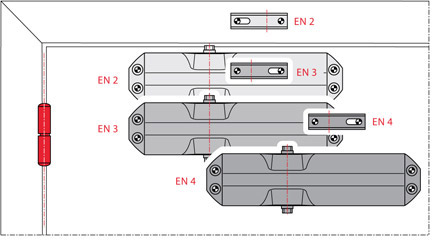
Picture. 1A Determination of closing forces EN 2/3/4 on example: DORMA door closer TS 68, EN2 and EN3 force is achieved by rotating the support arm, EN4 force by moving the door closer on the door wing.
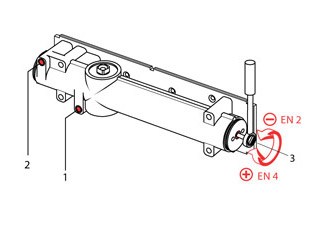
Picture 1B Continuous regulation (smooth) using the closing forces knob of closing force EN 2-4 on example : DORMA door closer TS 91
Instalation of the Door Closers
Instalation of surface Door closers may be done:
- on the door wing on the hinge side (picture 2A)
- on the frame opposite the hinge (picture 2B)
and:
- on the frame on the hinge side (picture 2C)
- on the door wing on the side opposite the hinges (picture 2D)
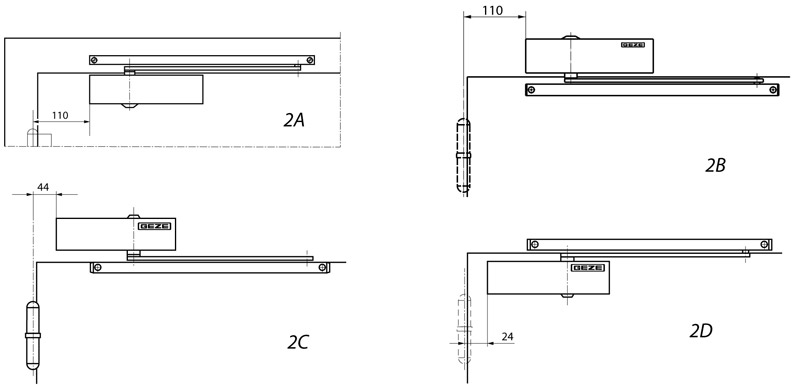
Picture 2: Different varieties of mounting an example GEZE 5000 Door closer
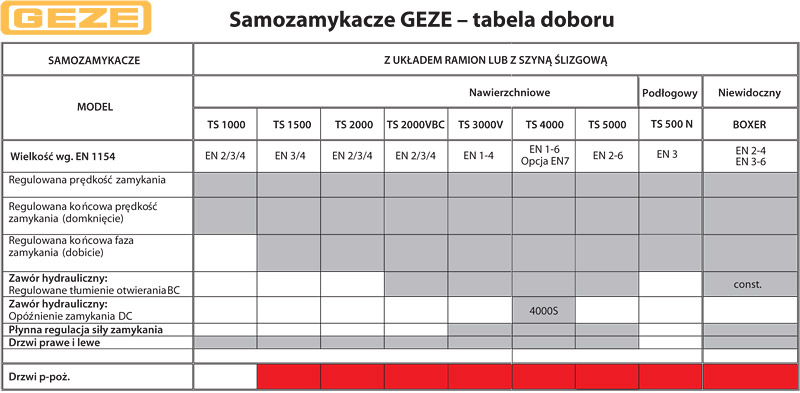
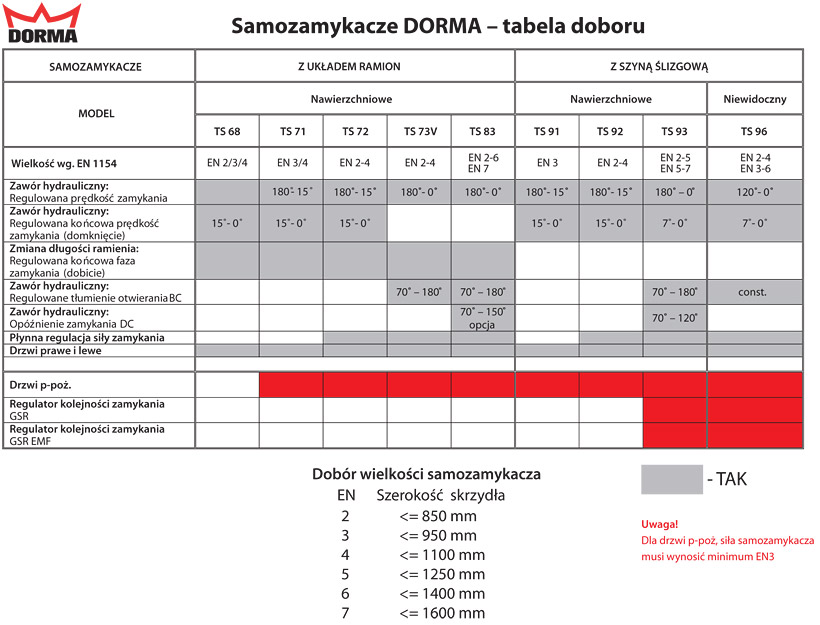
 English
English
 Polski
Polski 




